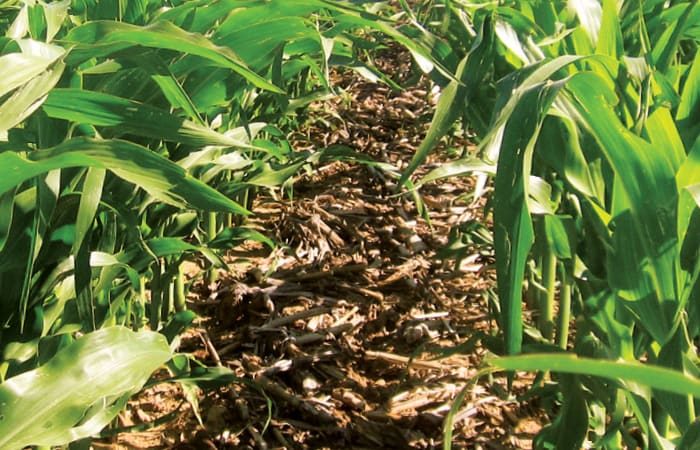No-Till Farmer
Get full access NOW to the most comprehensive, powerful and easy-to-use online resource for no-tillage practices. Just one good idea will pay for your subscription hundreds of times over.

The corn and soybean rotation has been a winner for many no-tillers in the Midwest and Northeast for years. While some still encounter frustrating planting conditions in heavy corn residue, many find that years of no-till management have led to systems that make planting soybeans into corn stalks effective and routine.
Also, soil conditions in long-time no-till fields seem to foster conditions that enhance natural decomposition of even the heaviest standing Bt stalk residue — especially when cover crops are used.
Wayne Brunsman, a 14-year no-tiller and soil conservation technician in northeastern Iowa’s Delaware County, added cereal rye cover crops to his 300-acre corn/soybean system in 2013 as a way to further ease tough no-till planting conditions by improving soil biology.
“Bacteria, protozoa, microscopic insects, earthworms, beetles, ants, mites and fungi are beneficial organisms that are part of the soil food web that cycles nutrients,” he explains.
Keeping this life in the soil and disturbing the soil as little as possible builds soil biology over time. The bacteria, fungi and beneficial nematodes feed on residue, roots and other dead organic matter.
“Like other living creatures, those organisms also need food and water and shelter,” he says. “Their activity in the soil helps decomposition, which ultimately increases soil organic matter and allows a no-till planter to sail across the field.”
Brunsman says by planting time, the corn residue in his fields is “shredded from the bottom side” by the biological activity in the soil.
“It’s all intertwined with cereal rye growing…